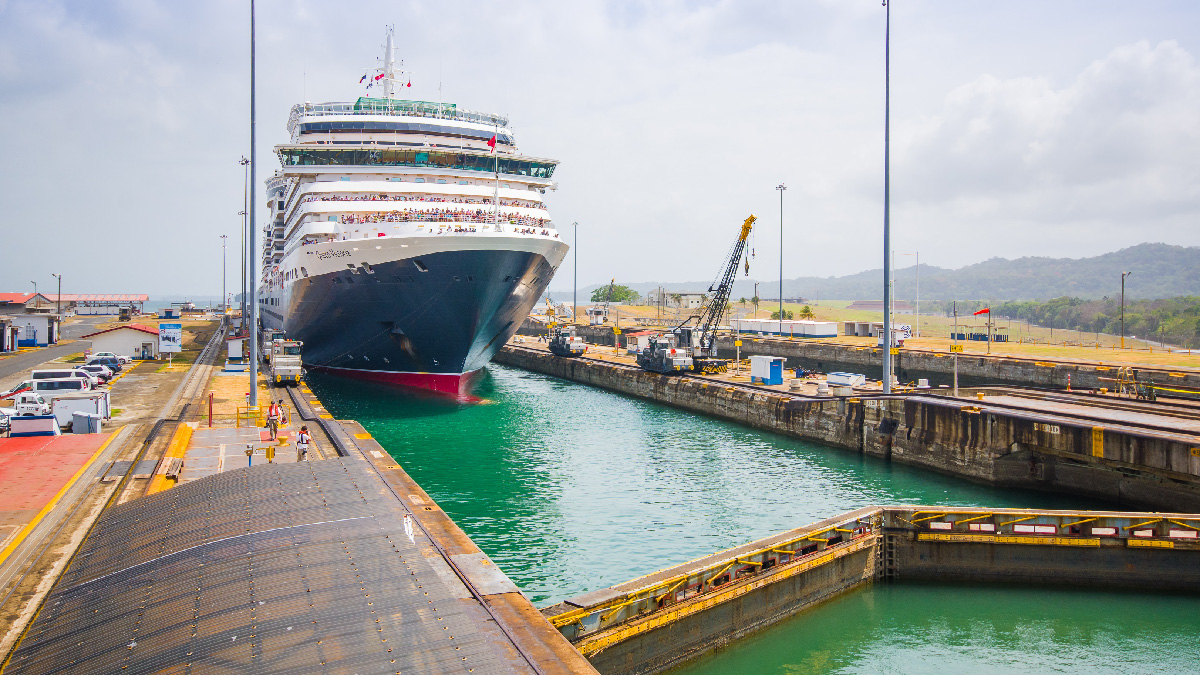Panamá es un destino perfecto para quienes desean ser testigos de la ingeniería humana y la naturaleza conviviendo en armonía. Los monumentos de Panamá son variados, ricos en historia, e inolvidables. Si quieres saber qué hacer en Panamá, esta guía profundiza más en los destinos que debes visitar. Empezaremos con los monumentos.
Monumentos arquitectónicos
El Canal de Panamá. La mayoría de la gente ha oído hablar del Canal, un paso artificial que conecta el Atlántico y el Pacífico, pero verlo en persona y observar los barcos que lo cruzan es una experiencia que nadie te puede contar. Dicho tiene más de cien años y está en uso hasta hoy.
Panamá La Vieja. Quizás hayas oído hablar de las ruinas de la antigua ciudad colonial de Panamá, fundada por los españoles. Pero la palabra “ruinas” no te cuenta la increíble historia: destruida y saqueada en 1671 por el pirata Morgan, lo que queda de ella, calles, casas, hoteles, y bares, sigue ahí para siempre.
Las Bóvedas. Estas, junto con los tres monumentos que siguen en la lista, son parte de lo que se conoce como el Casco Antiguo, donde se trasladó la Ciudad de Panamá en 1673. Las Bóvedas han tenido muchos usos a través de los años, desde espacio de almacenamiento y defensa de la ciudad, hasta dormitorios y, hoy en día, galerías de arte y restaurantes.
Catedral de Panamá. También en el Casco Antiguo, su edificación tomó cien años y en ella participaron artistas franceses que estaban ahí para el primer intento de la construcción del Canal. Ahora guarda reliquias de santos españoles y es un ejemplo de arquitectura colonial.
Iglesia San José. Que no te engañe el exterior de esta iglesia del Casco Antiguo, al interior su altar de oro ilumina todo y queda como uno de los pocos tesoros que sobrevivieron al saqueo de los piratas. Una de las cosas que definitivamente hay que ver en este precioso país.
Fuerte de San Lorenzo. Ubicado en Chagres, este fuerte es uno de los más antiguos de América, además era la línea de defensa contra piratas en el Caribe. Hoy en día es un sitio turístico donde además se pueden hacer excursiones a la selva circundante, observar los pájaros y disfrutar de la brisa marina.
Fuerte de San Jerónimo. Otro fuerte de defensa, San Jerónimo se encuentra en Portobelo y destaca por ser el que se conserva mejor y haber sido el más grande de su tiempo. Es un destino turístico donde puedes observar e interactuar con las edificaciones de cerca y conocer sus historias de asaltos piratas.
Iglesia de San Felipe en Portobelo. Esta iglesia del siglo XIX fue la última construida por los españoles antes de su retiro. Aquí se encuentra el Cristo Negro, una impresionante y milagrosa estatua cuyo día, la Fiesta del Cristo de Portobelo, se celebra el 21 de octubre, durante la cual se la viste de rojo.
Petroglifos. Son dibujos o relieves en roca hechos por los habitantes originarios de Panamá que aún no han sido descifrados. Puedes encontrarlos por todo el país, pero si planeas viajar a Panamá por ellos, recomendamos la Reserva Forestal el Montuoso (RFM), en el Distrito Las Minas, donde también hay especies nativas, como el venado corzo, o el conejo pintado.
Calzada de Amador. Un camino que une varias islas y fue construido con rocas que se extrajeron para hacer el Canal. Desde aquí se pueden visitar algunas de las mejores playas de Panamá, como las de las islas Taboga y Las Perlas o el Biomuseo diseñado por Frank Gehry, que cuenta la historia natural y cultural de Panamá y su impacto mundial.
Monumentos naturales
– Parque Metropolitano.
¿Sabías que en medio de la Ciudad de Panamá hay una selva? El Parque Metropolitano se inauguró en 1988 para resguardar los tesoros precolombinos del área y la selva tropical de la ciudad. Puedes encontrar perezosos, monos tití, osos hormigueros, o subir a la grúa del Smithsonian Institute que te eleva sobre la copa de los árboles: es un museo hecho por y para la naturaleza.
– Cerro Gaital.
Localizado en Coclé, desde las alturas de este imponente macizo se pueden visualizar los dos océanos a cada lado. Es hogar de una increíble variedad de plantas, animales y especies en extinción, y ecosistemas. El ascenso no es fácil, pero si te gusta el senderismo, este lugar es insuperable.
– Comarca de Guna Yala.
Conocida hasta hace diez años como Kuna Yala, esta comarca indígena, territorio autónomo de los Guna, está ubicada al noreste del país e incluye las islas conocidas como San Blas, donde encontramos playas tropicales en islas paradisíacas. El pueblo Guna vive de forma tradicional, sin intervención occidental, y puedes observar sus modos y costumbres en relación más cercana y natural con el medioambiente.
¡Ahora ya sabes qué ver en Panamá! Los monumentos de Panamá cuentan la rica y matizada historia de un país donde naturaleza, arquitectura y sociedad se encontraron para iluminar una relación con pocos semejantes.












